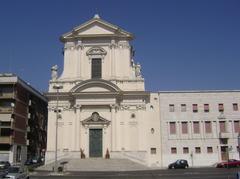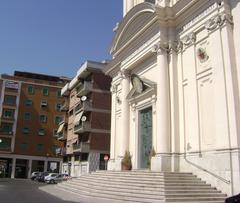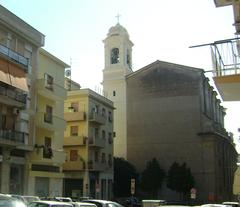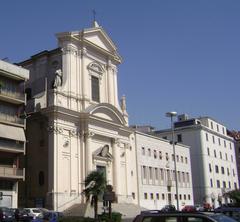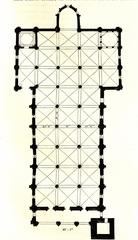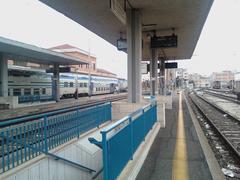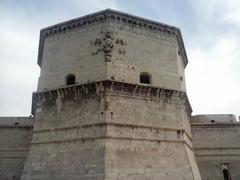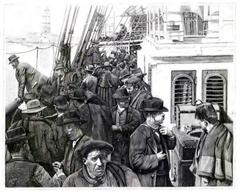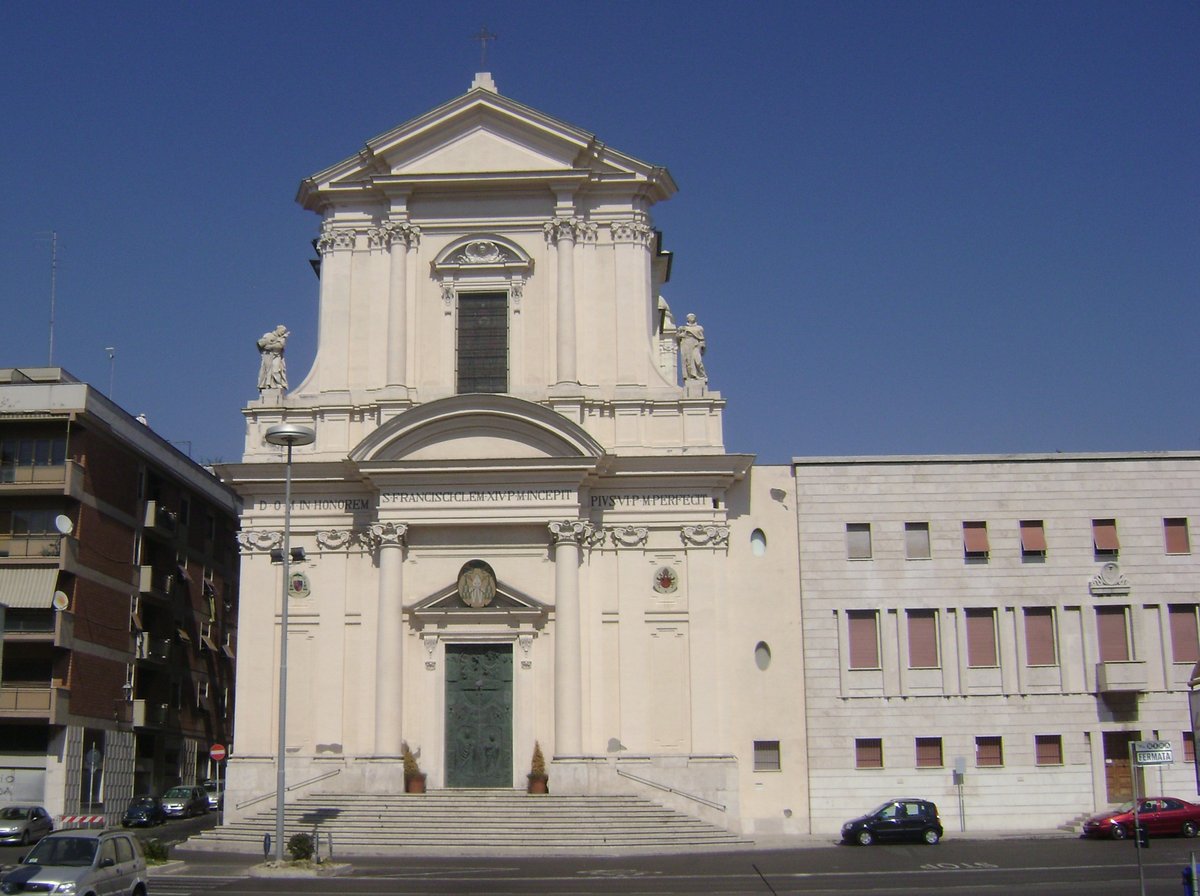
Visiting Cattedrale di San Francesco d’Assisi in Civitavecchia: Hours, Tickets, and Tips
Date: 19/07/2024
Introduction
Planning a trip to Civitavecchia, Italy? One of the must-visit landmarks is the Cattedrale di San Francesco d’Assisi. This historic cathedral, rich in architectural beauty and cultural significance, offers a glimpse into Italy’s religious heritage. Originally established in the 17th century, the cathedral stands as a testament to the enduring influence of Saint Francis of Assisi and the Franciscan Order. Visitors are not only drawn to its historical and spiritual relevance but also to its stunning Baroque architecture and splendid artworks. This comprehensive guide covers everything you need to know about visiting the Cattedrale di San Francesco d’Assisi, including its history, visitor information, and tips for making the most of your visit. Whether you’re a history buff, an architecture enthusiast, or simply looking for a serene place to explore, this cathedral has something for everyone. For the most current visiting hours and events, be sure to check the official Civitavecchia tourism website.
Table of Contents
- Introduction
- History of Cattedrale di San Francesco d’Assisi
- Modern-Day Significance
- Visitor Information
- Notable Artworks and Features
- The Role of the Franciscan Order
- Historical Events and Celebrations
- Preservation Efforts
- FAQ
- Conclusion
History of Cattedrale di San Francesco d’Assisi
Origins and Early Development
The Cattedrale di San Francesco d’Assisi, located in Civitavecchia, Italy, has a rich history that dates back to the 17th century. The cathedral was originally built on the site of a small church dedicated to Saint Francis of Assisi. The initial construction began in 1610, under the direction of the Franciscan Order, which sought to establish a significant religious presence in the region. The choice of Saint Francis as the patron saint reflects the Franciscan influence and the widespread veneration of the saint in Italy.
Architectural Evolution
The cathedral underwent significant architectural changes over the centuries. The original structure was relatively modest, but as the town of Civitavecchia grew in importance, so did the need for a more grandiose place of worship. In the 18th century, the cathedral was extensively renovated and expanded. The Baroque style, which was prevalent at the time, heavily influenced the redesign. This period saw the addition of intricate stucco work, elaborate altars, and a more imposing façade.
The 19th Century and Beyond
In the 19th century, the cathedral continued to evolve. One of the most significant events during this period was the consecration of the cathedral in 1854. This event marked the culmination of years of work and the recognition of the cathedral’s importance to the local community. The 19th century also saw the addition of several chapels and the installation of new artworks, including paintings and sculptures by renowned artists of the time.
World War II and Reconstruction
The Cattedrale di San Francesco d’Assisi, like many historical buildings in Italy, suffered damage during World War II. The bombings that targeted Civitavecchia, a strategic port town, did not spare the cathedral. The structure sustained significant damage, particularly to its roof and interior. However, the post-war period was marked by a determined effort to restore the cathedral to its former glory. The restoration work, completed in the 1950s, was meticulous and aimed at preserving the historical and artistic integrity of the building.
Modern-Day Significance
Today, the Cattedrale di San Francesco d’Assisi stands as a testament to the resilience and faith of the people of Civitavecchia. It is not only a place of worship but also a historical monument that attracts visitors from around the world. The cathedral’s rich history is evident in its architecture, artworks, and the stories of the people who have worshipped there over the centuries.
Visitor Information
Visiting Hours
The cathedral is generally open from 9:00 AM to 6:00 PM daily, but it’s best to check the official Civitavecchia tourism website for the most up-to-date information.
Tickets
Entrance to the cathedral is free, but donations are welcome to help with preservation efforts.
Travel Tips
- Guided Tours: Guided tours are available and offer a deeper understanding of the cathedral’s history and significance. It’s recommended to book these in advance.
- Nearby Attractions: While in Civitavecchia, consider visiting other historical sites such as Forte Michelangelo and the National Archaeological Museum.
- Accessibility: The cathedral is accessible to visitors with disabilities. However, it’s advisable to check specific accessibility options in advance.
- Photography: Photography is allowed, but be respectful of ongoing services and other visitors.
Notable Artworks and Features
The cathedral houses several notable artworks and features that reflect its historical and religious significance. One of the most prominent is the main altar, which is a masterpiece of Baroque art. The altar is adorned with intricate carvings and gilded details that highlight the craftsmanship of the period. Another significant feature is the series of frescoes that decorate the interior walls. These frescoes depict scenes from the life of Saint Francis of Assisi and other biblical stories, providing a visual narrative that complements the spiritual atmosphere of the cathedral.
The Role of the Franciscan Order
The Franciscan Order has played a crucial role in the history of the Cattedrale di San Francesco d’Assisi. From its inception, the order has been involved in the administration and upkeep of the cathedral. The Franciscans’ dedication to their patron saint is evident in the numerous references to Saint Francis throughout the cathedral, from the artworks to the architectural details. The order’s influence extends beyond the physical structure, as they have also been instrumental in fostering a sense of community and spiritual growth among the parishioners.
Historical Events and Celebrations
Over the centuries, the Cattedrale di San Francesco d’Assisi has been the site of numerous historical events and celebrations. One of the most significant is the annual feast day of Saint Francis of Assisi, celebrated on October 4th. This event draws large crowds and includes a series of religious ceremonies, processions, and community gatherings. The cathedral also hosts various other religious and cultural events throughout the year, making it a central hub of activity in Civitavecchia.
Preservation Efforts
Preserving the historical and architectural integrity of the Cattedrale di San Francesco d’Assisi has been a priority for the local community and authorities. Over the years, several restoration projects have been undertaken to address the wear and tear caused by time and environmental factors. These efforts have been supported by both public and private funding, reflecting the widespread recognition of the cathedral’s cultural and historical value. Modern preservation techniques have been employed to ensure that the cathedral remains a vibrant and enduring symbol of Civitavecchia’s heritage.
FAQ
Q: What are the opening hours of Cattedrale di San Francesco d’Assisi? A: The cathedral is generally open from 9:00 AM to 6:00 PM daily. Check the official website for the most current information.
Q: Is there an entrance fee for the cathedral? A: Entrance is free, but donations are welcome.
Q: Are guided tours available? A: Yes, guided tours are available and should be booked in advance.
Q: Can I take photographs inside the cathedral? A: Photography is allowed, but please be respectful of ongoing services and other visitors.
Q: Is the cathedral accessible for visitors with disabilities? A: Yes, the cathedral is accessible, but it’s advisable to check specific accessibility options in advance.
Conclusion
In conclusion, the Cattedrale di San Francesco d’Assisi is not merely a place of worship but a beacon of history and culture in Civitavecchia. From its humble beginnings in the 17th century to its standing as a monumental symbol of resilience post-World War II, the cathedral encapsulates the rich historical and spiritual tapestry of the region. With its impressive Baroque architecture, significant artworks, and deep-rooted Franciscan influence, the cathedral offers a multifaceted experience for all visitors. Whether you are there to admire its artistic beauty, delve into its historical significance, or participate in its vibrant religious and cultural events, your visit promises to be an enriching experience. For the latest updates and travel tips, follow us on social media or download our mobile app Audiala to enhance your travel planning.
References
- Cattedrale di San Francesco d’Assisi, 2024, Civitavecchia Port Mobility
- Cattedrale di San Francesco d’Assisi, 2024, Cattedrale Civitavecchia
- National Archaeological Museum, 2024, Museo Archeologico Civitavecchia
